Vivo S1 review- Jack of all trades
The Vivo S1 is capable of a few neat features that are unheard of in this price segment.
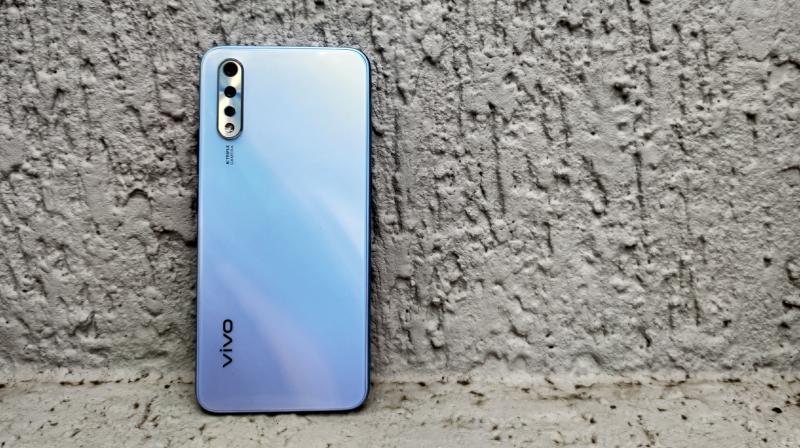
The Vivo S1 enters the smartphone market at a time when every mid-range device is trying to bring a ‘flagship-like’ experience. The pursuit of the budget flagship trophy leaves some devices packed with hardware features, but they miss out on quality and the overall experience.
The Vivo S1 does things a bit differently. It’s not the most powerful device in the segment but is good at everything it does. And to top it off, the device is capable of a few neat features that are unheard of in this price segment.
Let’s get the facts straight out of the box. There is no pop-up camera here, no 48MP sensor, and no USB-C. The Vivo S1 is not trying to be something it is not, a ‘flagship’ device. It is a mid-range handset and focuses on elements that a mid-ranger should excel at. So here’s what you do get — a slim, compact and beautiful design, a big 4500mAh battery with 18W fast charging, a 32MP front camera, a triple rear camera setup, a dedicated expandable memory card slot, the latest Android version, and even a headphone jack. We reviewed the Vivo S1 extensively and here’s what we think.
Design, Build
The device rocks a 6.38-inch AMOLED screen with a tiny dew-drop notch on the top. The triple camera setup on the rear is coloured instead of the boring black but protrudes a bit. The top of the device is clean. The USB port, headphone jack, speaker grille and microphone are on the bottom edge. The power and volume buttons are on the right and on the left are the SIM slot and an extra configurable button that brings up the Google Assistant or image search based on what you choose in the settings.

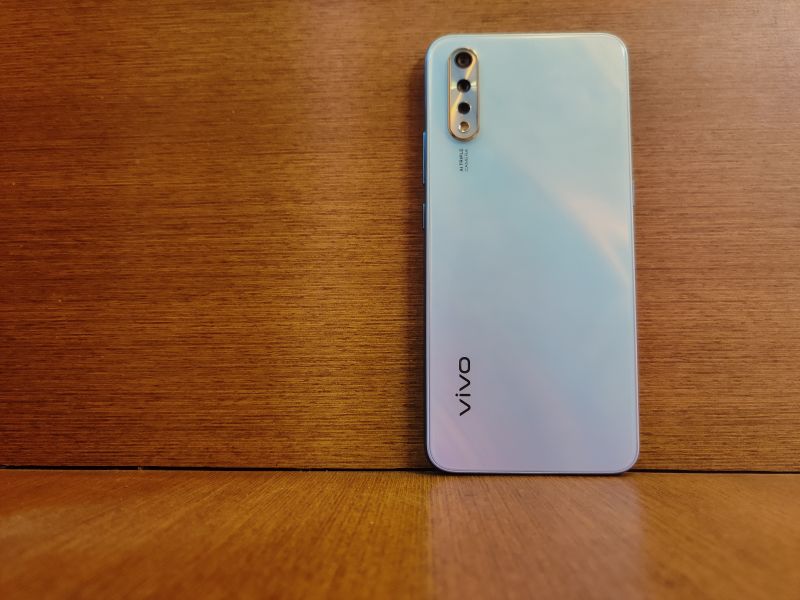
The phone doesn’t skip on any sensors and all the major ones a phone should have been here, including a compass/magnetometer sensor. The in-display fingerprint sensor is not the fastest we’ve seen but is regardless decently fast.
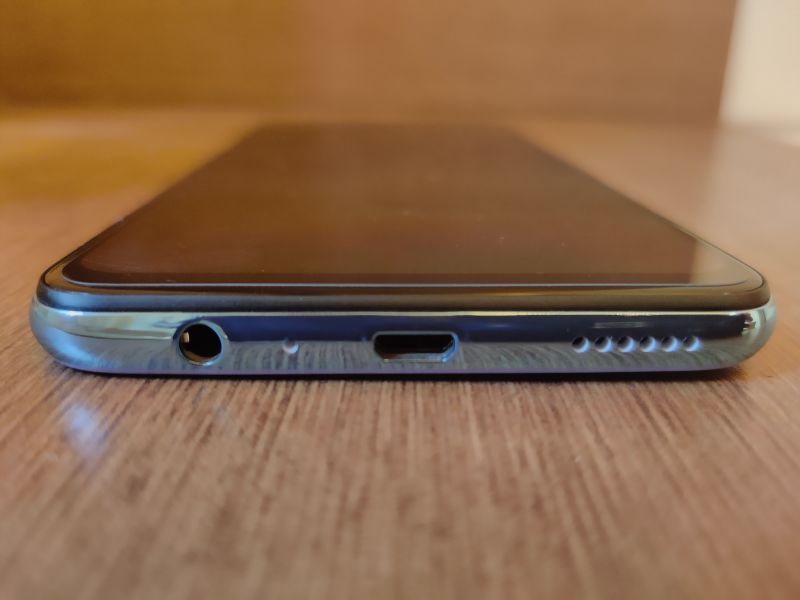
The Vivo S1 is one of the prettiest devices we have seen in the segment. It ditches the curved edges for the premium glass-like rear. That, however, works in favour of the device as it looks premium despite the non-metal body. The Vivo S1 is one of those devices you have to hold in your hand to experience. The phone also feels sturdy despite its slim build. The keys are wobble-free and the size of the phone is just enough to comfortably hold it in one hand.
Screen
The Vivo S1 has a bright 6.38-inch AMOLED screen with good viewing angles and the brightness is decent outdoors. The colours seem very slightly washed out, which is something a software update should easily fix. The display options do allow you to switch between warm and cool colours though that gives it a personal touch.

The dew-drop notch does restrict the device from being a truly full-screen display but offers you the assurance of having a phone without the hassles of the moving parts of a pop-up camera. Regardless, games and media on the Vivo S1 are pleasurable on the screen.
Software
The Vivo S1 runs the latest FunTouchOS 9 on top of Android 9.0 Pie. While most manufacturers are toning down their custom skins to look as close to stock as possible, the Vivo goes the other way round, customising every last bit of the operating system inside out. Though we are fans of the stock Android way of life, we were initially overwhelmed by FunTouchOS 9.0. It took us a while, and will indeed take anyone coming to this phone from another brand, a while, to get a hang of this interface.
However, once we got used to it, we pretty much got hooked on to it. The insane tweakability hidden in a vast menu of settings ensures that you can tailor your Vivo S1 to look exactly how you want. From themes, and Always-On display customisations, to flashy transitions and a system-wide dark mode that even turns your own apps WhatsApp and Instagram dark, FunTouchOS has got it all.

 The dark mode on the Vivo S1 gives a dark theme to your apps
The dark mode on the Vivo S1 gives a dark theme to your apps
Add to those possibilities the custom launchers, icon packs and mods that Android already offers and you basically have a phone that you can truly make your own.
One complaint we had was that the dark mode is essentially a dark grey theme throughout the interface but doesn’t even provide the option for a completely black theme, which could’ve really helped save some battery life considering this phone has an AMOLED panel. Plus, we at the office, and a large number of users, really love an all-black dark mode. Hopefully, a future update brings us that.
The software also has fresh takes on options like the one-hand mode, the Always-on display and the screen-off gestures that put the traditional implementations we’ve seen on other phones to shame.
Take the One-handed mode for example, which lets you quickly swipe in and out from any edge in one motion to access it. It even allows you to custom-set the size of the shrunken screen rather than settle for preset options of 4-inch or 4.5-inch.
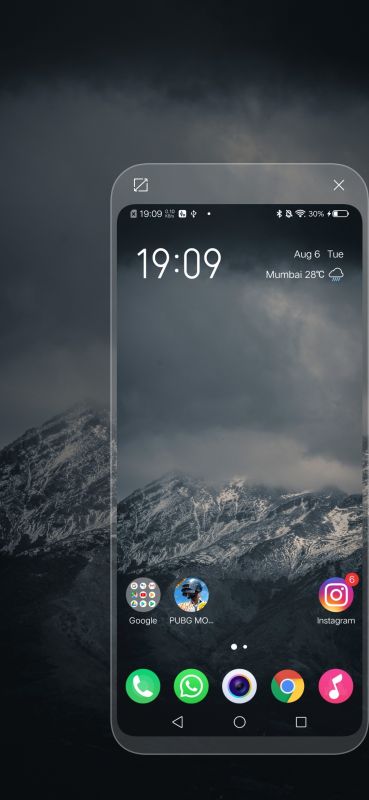 One-hand mode on the Vivo S1
One-hand mode on the Vivo S1
The usability, attention to detail and sheer fun of the FunTouchOS win this department for the Vivo S1.
Camera
The Vivo S1 has a triple camera setup on the rear comprising a main 16MP sensor, a 2MP depth sensor and an 8MP ultra-wide sensor. The camera app has loads of modes that will grab your attention almost immediately after you open it. It’s a bit overwhelming at first, more so if you’re new to the triple camera mania, but once you get used to the interface, this is an easy intuitive and fun app to use.
The main sensor takes good pictures outdoors. There is little loss of detail and the Phase Detection Auto Focus (PDAF) is quick and accurate, which along with the assisting depth sensor, gives you a nice Bokeh effect on depth-of-field shots.
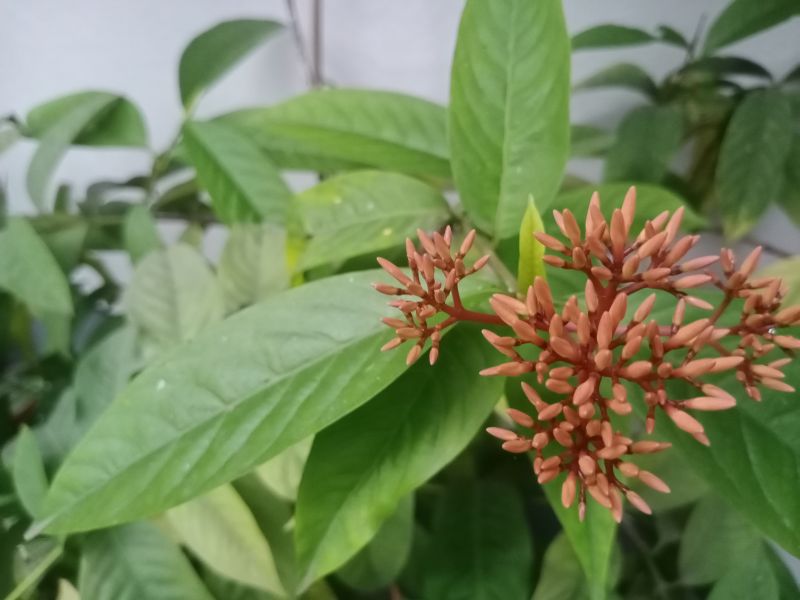

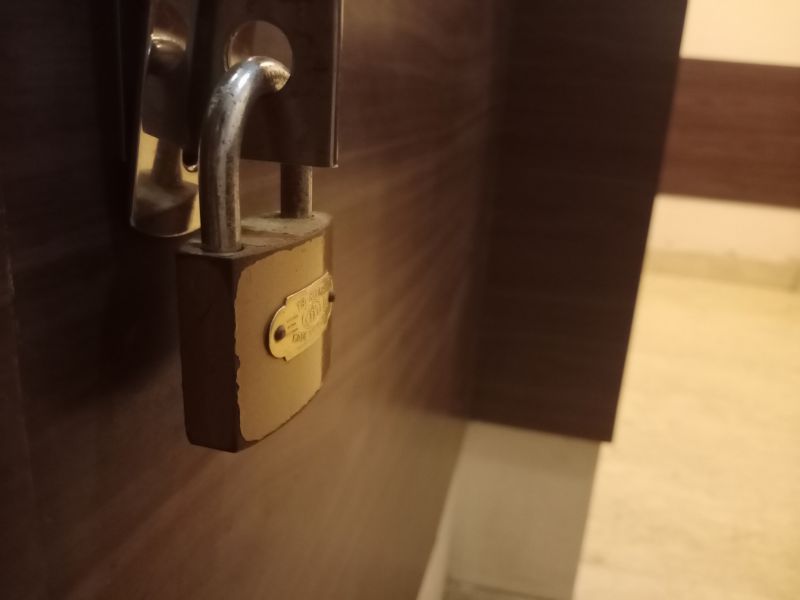

Moving indoors, shots didn’t lack detail in indoor lighting but grabbed a lot of noise, which is expected in mid-range phones. The performance indoors is average, to say the least.
There is no 48MP sensor here, so the max resolution you can get with the rear camera is 16MP.
The ultra-wide sensor is a welcome addition on the device. It works well, getting you a wider frame to capture, making it great for capturing a large crowd of posers, or a vast landscape.
The 32MP front camera is amazing in outdoor as well as indoor lighting and unlike many front-facing cameras in this segment; it is not a fixed focus one. So you can tap on the area you want in focus while capturing a selfie. The quality of the shots is good. In fact, we’d even say the front cam does better than the main rear sensor in some areas, especially indoors.
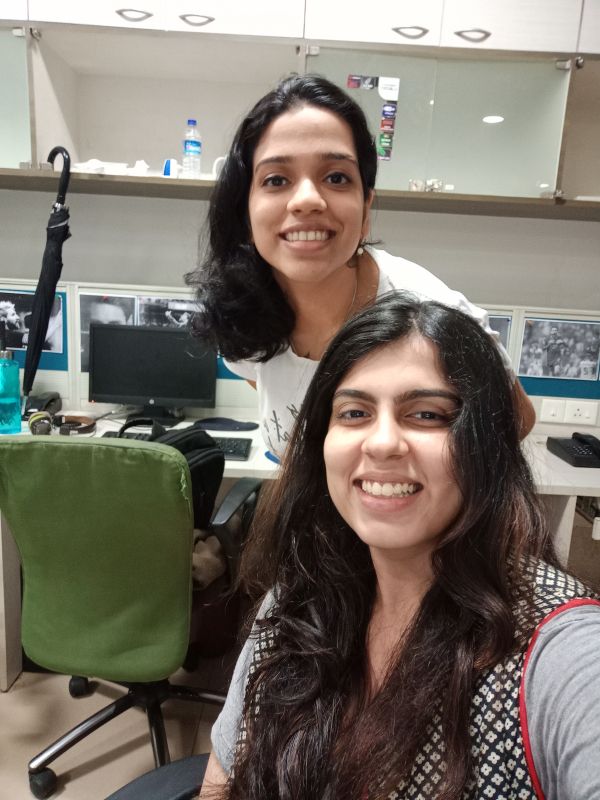
The portrait mode also offers real-time lighting effects that can go anywhere between simply enhancing your selfie to making it look like a proper edited piece of art, literally at the flick of a switch; something similar to what Apple does with its camera software.

 Vivo S1's real-time monochrome filters
Vivo S1's real-time monochrome filters
Performance
The Vivo S1 rocks the MediaTek P65 Helio Octa-core processor clocked at 2GHz and the unit we have is the one with 6GB RAM. A well optimised Funtouch OS coupled with the generous amount of RAM ensures a snappy phone even with multiple apps running. There were no issues even with the fanciest transitions. The phone holds an Antutu score of 1,46,049 points.
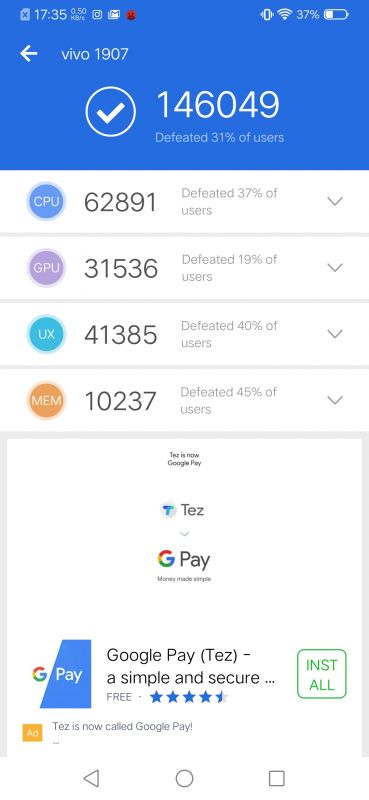
Gaming
While not exactly a gaming device, we were surprised to experience good gaming sessions on the Vivo S1 with both casual games like Mini Militia and heavy titles like PUBG. The Mali-G52 MP6 graphics ensure smooth rendering. PUBG not only supports HD graphics on ‘High’ framerate, but it also runs pretty well on it too.
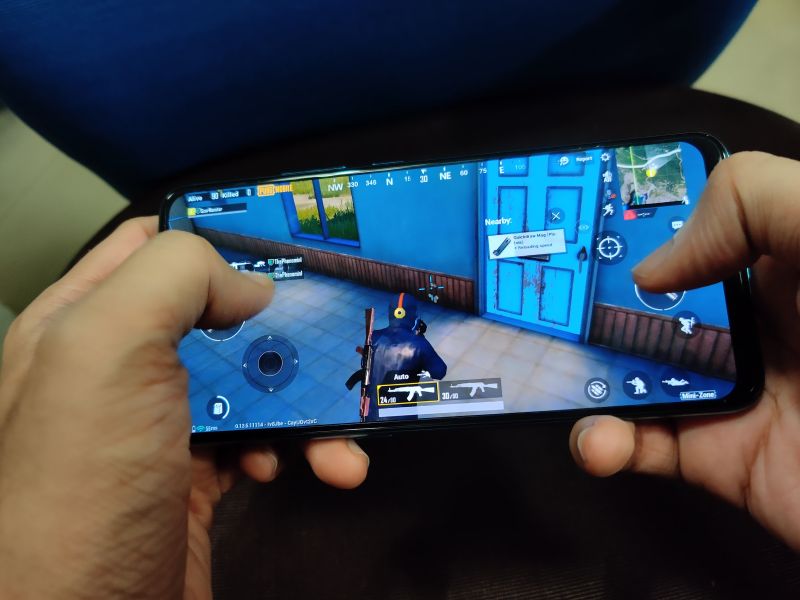
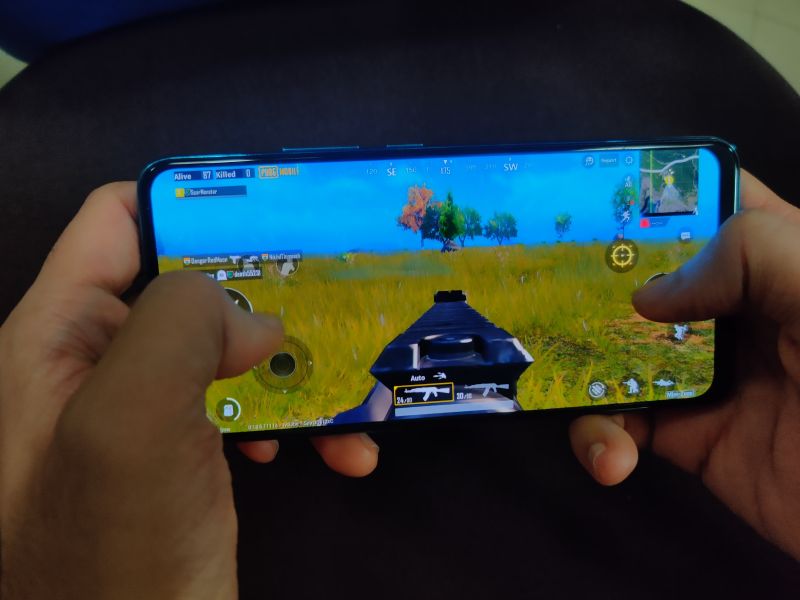
The phone offers one of the best gaming experiences on a Mediatek-powered device we’ve had our hands on in this price segment yet. Moreover, there’s a dedicated gaming mode that further boosts gaming performance, directing more of the phone’s resources to the running game. Neat!
Battery Life
The Vivo S1 packs a massive 4500mAh battery that supports fast charging of 18W. The big battery provides enough juice on the Vivo S1 to run it through a day and a half of moderate use easily. There are plenty of battery optimising features woven through the interface to even better the already pretty good battery life.
There’s also a Low-Power mode that reduces the overall resource usage of the phone to save more battery, similar to the standard Android power-saving mode. There’s also a Super Power Saving mode that only enables the phone, contacts, clock and SMS messages on the device and shuts down everything else. However the battery life of the phone is so good, you’ll likely resort to these options only in emergencies.
Verdict
The Vivo S1 is a great midrange device and an all-rounder that perfectly fits the ‘Jack of all trades’ persona since it balances doing everything a phone can do well but doesn’t stand out with anything in particular, except maybe the looks and the software experience which again, won’t please everybody.
But what about the price?
The base 4GB+128GB is priced at Rs 17,990.
The other 6GB+64GB is priced at Rs 18,990.
The highest variant of 6GB+128GB is priced at Rs 19,990.
Now, whether you would want the device at these prices brings us back to the ‘budget flagship’ competitors in the 15k-20k price bracket. The Vivo is no doubt a solid overall performer for the price, but in the same range you will find devices offering Snapdragon processors and better camera capabilities including larger 48MP sensors and pop-up front cameras (if you’re into that).
However, those options will lack the battery and the versatile user interface of the Vivo S1. If you’re not concerned with the latest in bleeding-edge tech like the pop-up camera, and your priority is a stable, decently powerful phone, the Vivo S1 is a great deal.

